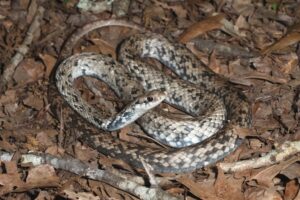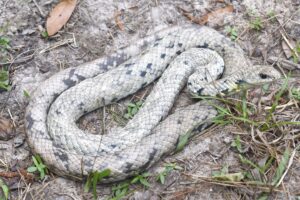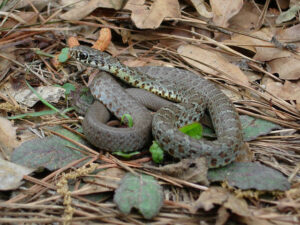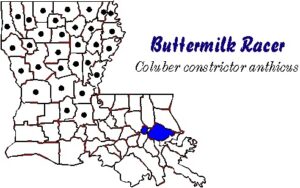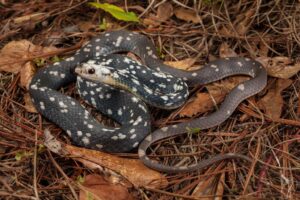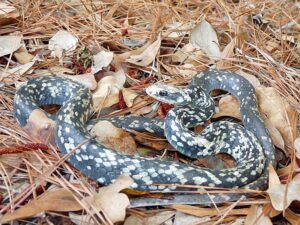The buttermilk racer, a subspecies of the eastern racer, is a thin-bodied, agile, fast moving colubrid native to the southern United States. Other common names of the species are ash snake, brown racer, blue racer, Louisiana black snake, spotted racer, variegated racer, spotted black snake, and white oak racer. It is most active from spring through summer.
Scientific Classifications
- Suborder:Serpentes
- Family:Colubridae
- Genus:Coluber
- Species:C. constrictor
- Subspecies:C. c. anthicus
Conservation Status
Description
Size
It can attain a total length of 60 in (1.52 m). The maximum recorded total length is 70 in (1.78 m).
Color and Appearance
The body pattern is unique with a black, yellow, green, gray or sometimes, blue ground color having yellow or white flecks. The underside is cream or white. The large eyes have round pupils and the anal scale is divided.
Are They Dangerous to Humans
When caught, they try to deter predators by releasing a foul-smelling musk. They also thrash around in an attempt to escape and can unknowingly injure themselves in the process. They are quick to bite when handled but are non venomous. Being fairly nervous, the species doesn’t do well in captivity.
Buttermilk Racers at a Glance
Distribution
The racer is only found in the US, in Louisiana, southern Arkansas, and eastern and southern Texas.
Habitat
It inhabits open longleaf pine woodlands and nearby grasslands as it can blend well with the surroundings having patterns of dappled light.
Lifespan
The buttermilk racer has a lifespan of 5-10 years.
Predators
They are eaten by cats, dogs, birds and coyotes.
Diet
The diurnal, active predator eats lizards, rodents, and frogs. The juveniles also feed on different kinds of soft-bodied insects.
Reproduction
Oviparous (lays eggs that hatch outside the body)
Females lay clutches of 6-25 eggs that hatch in late summer. The newborns don’t look like the adults and sport a blotched pattern that gradually fades into the solid background color with flecks.
Source
inaturalist.org, flickr.com, digital.sfasu.edu, kingsnake.com, i.pinimg.com, pinglelist.org

